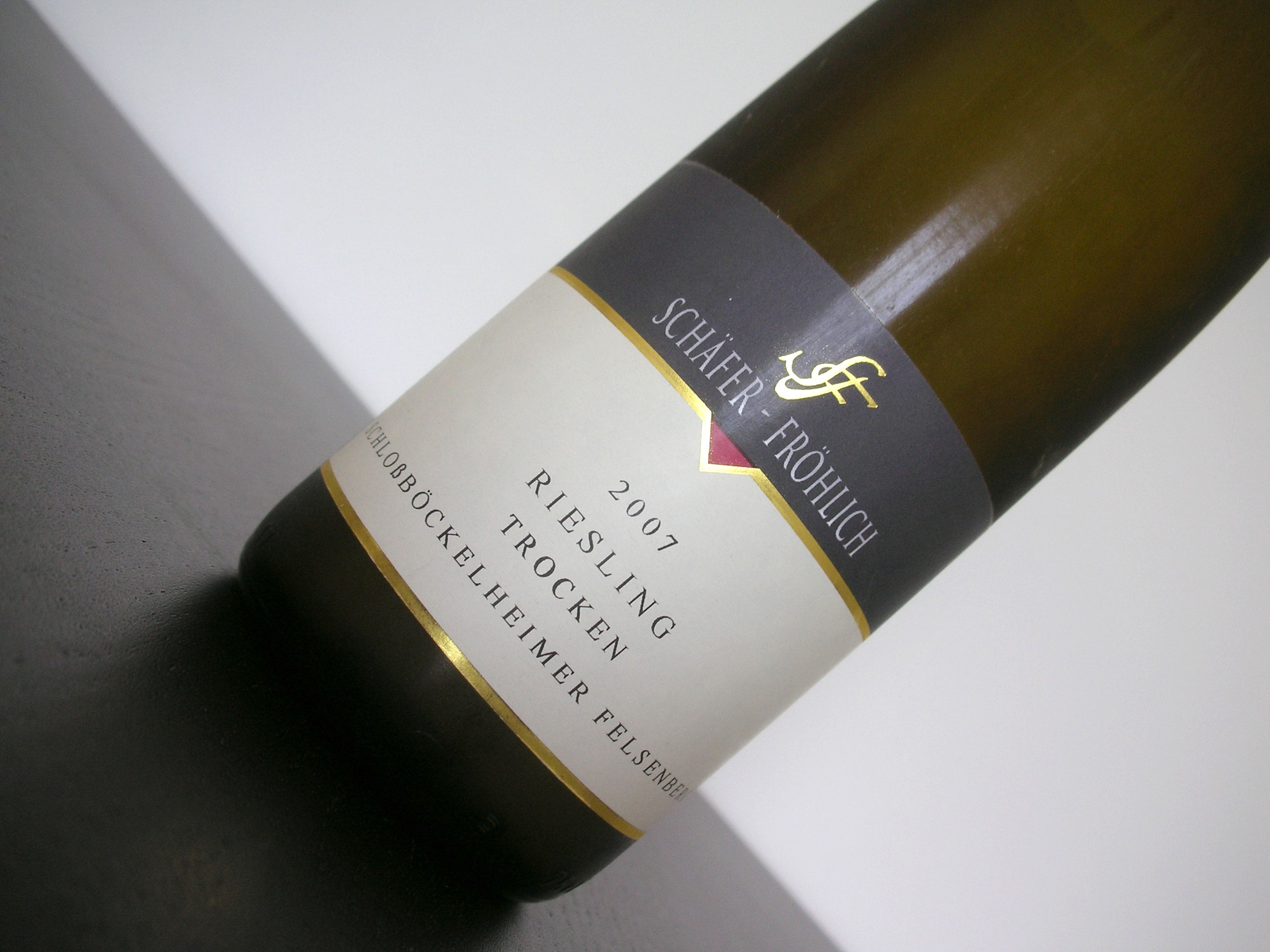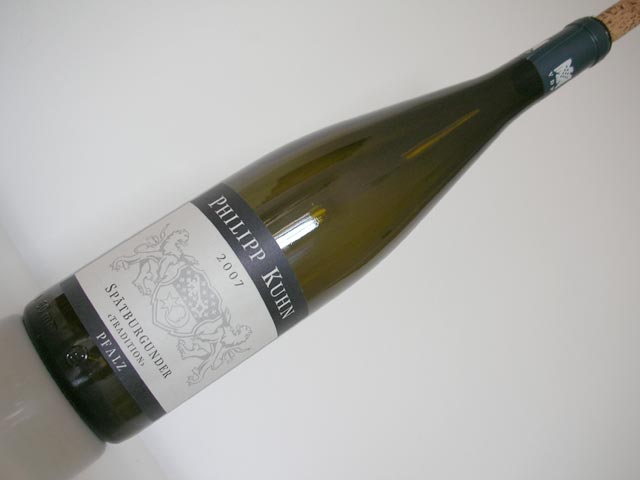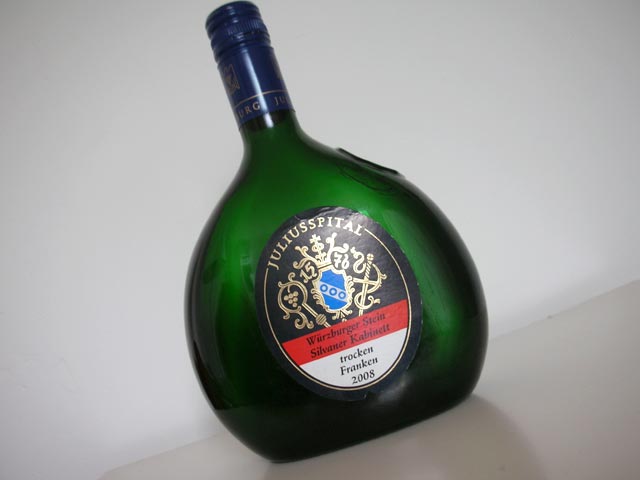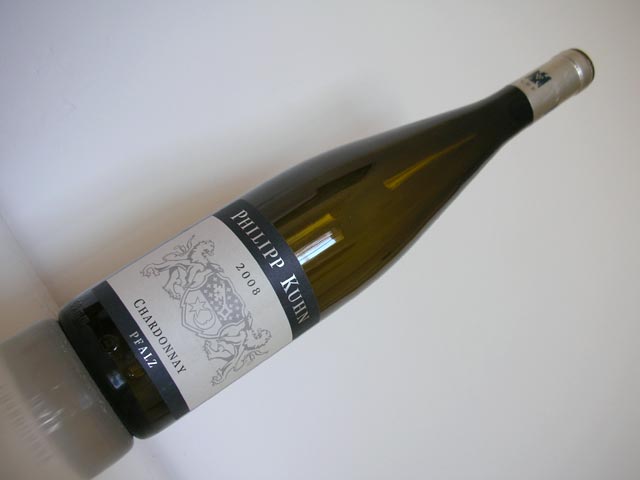Van Volxem, Weißburgunder, 2008
These days, I find myself drinking more and more Weißburgunder (Pinot Blanc). It can be very food friendly (especially when you go for lighter food, fish and the seasonal asparagus (even though the latter is always a bit tricky)) and I enjoy the contrast to the sharper Riesling. A particularly good and typical recent example for Weißburgunder came from the Saar river, very close to the Mosel. It looked a little bit like this:









